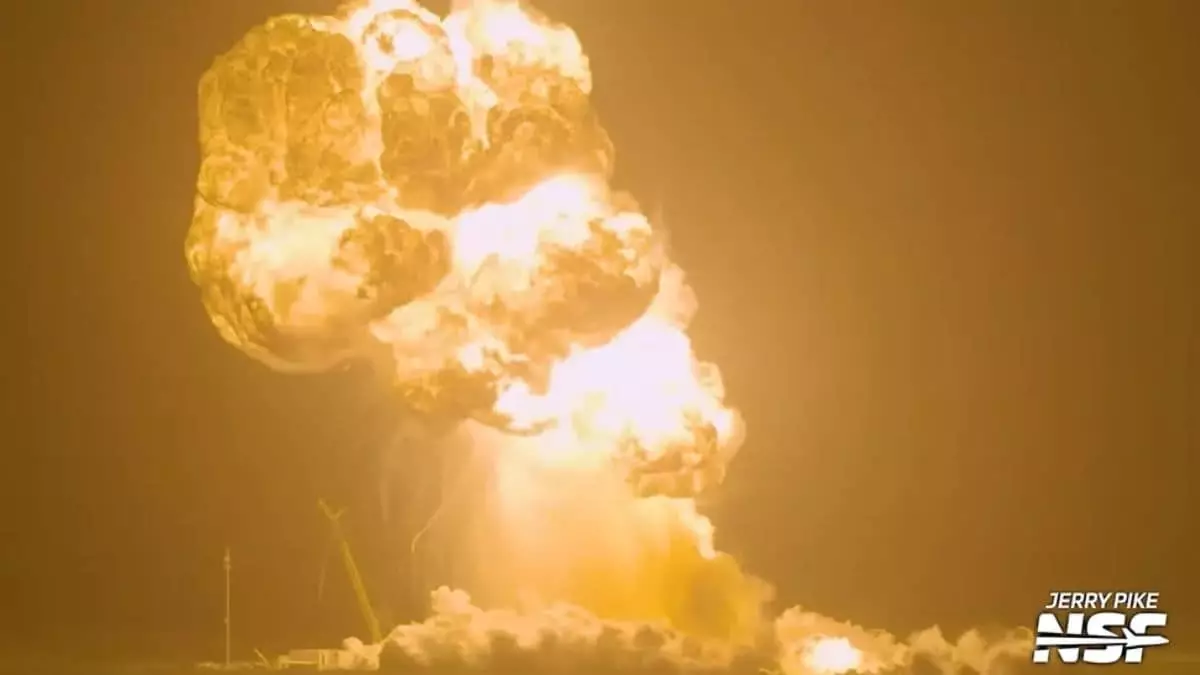In a dramatic scene reminiscent of a post-apocalyptic movie, SpaceX’s Starbase in Texas became the backdrop for yet another failure in the ambitious journey toward interplanetary travel. On a late Wednesday night, a routine ground test of the Starship rocket turned catastrophic as a massive explosion erupted from the test pad, launching flames and debris into the night sky. While fortunately no personnel were harmed, the incident served as a jarring reminder of the often perilous path of innovation.
As fluorescent fireballs danced above the Texas desert, one can’t help but question the recklessness entwined with the technological fervor driving SpaceX. This extensive blast—a byproduct of static fire testing involving the Super Heavy booster—reveals a fundamental issue: the aggressive development strategy championed by Elon Musk may be leading the company into dangerous territory. Instead of celebrating iterative advancements toward the goal of human colonization of Mars, perhaps we should be questioning the risks of “testing aggressively” without full consideration of the variables involved.
Rocket Science and Risk Assessment
Initial analysis pointed to a failure in a pressurized tank known as a Composite Overwrapped Pressure Vessel (COPV). While Elon Musk, attempting to downplay the disaster, referred to it as nothing more than a mere “scratch,” the incident raises critical questions about safety protocols and risk management in rocket design. The cavalier handling of such potential dangers appears to be overshadowing the more troubling aspects of the technology. How can we seriously entertain the thought of sending humans into space when the tools to get them there are struggling against their own design failures?
Moreover, Musk’s vision of a Martian settlement tantalizes many, fueling a global ambitions toward space exploration. Yet, the frequency of these explosive setbacks, including a catastrophic failed splashdown of another prototype this past May, invites skepticism. Each failure compounds the risk for both the company and its potential occupants, and stirs a necessary debate about whether SpaceX’s motto should really be “fail fast, learn faster,” or “do so cautiously.”
Balancing Progress and Responsibility
The recent authorization by the Federal Aviation Administration (FAA) for SpaceX to ramp up launches to a staggering 25 per year, disregarding concerns raised by environmental advocates, further complicates the ethical landscape surrounding SpaceX’s operations. Are they under pressure to push the envelope at the cost of due diligence? Community and environmental concerns ought to be treated with the utmost respect, especially when considering the long-standing impacts of such endeavors on our planet.
Even NASA, a notable partner and supporter of SpaceX’s various projects, must tread carefully as it embraces a system marred by instability. The lure of deep-space capabilities cannot overshadow the significant risks linked with fast-tracking development without adequate safeguarding. In this tightly woven tapestry of aviation progress, the final thread—human lives—stands at the precipice of being treated as mere collateral in the unyielding quest for domination in space.
SpaceX’s endeavors should be celebrated for their ambition and pioneering spirit. However, one must advocate for a tempered approach that balances audacity with responsibility. It’s time to scrutinize when innovation crosses the line into recklessness, and to reevaluate whether our aspirations for the stars might be leading us into disastrous territory on Earth.

Leave a Reply